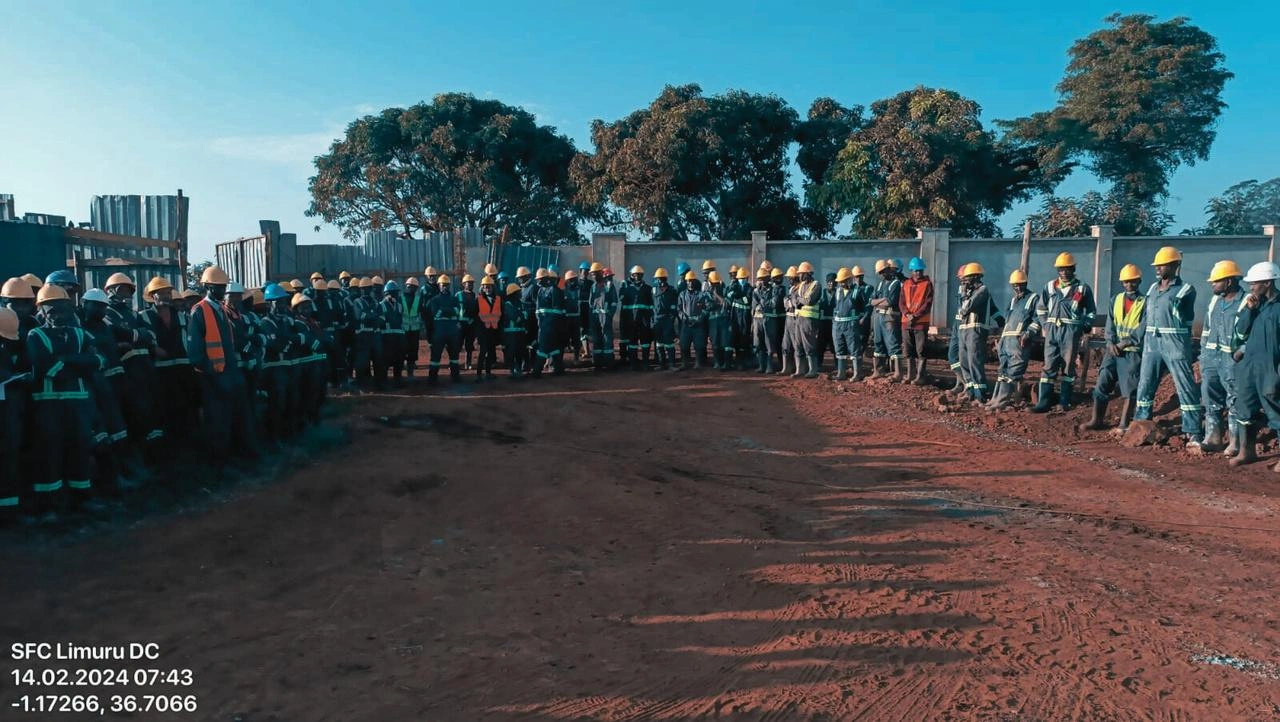Over the years, construction health and safety has gained prominence among companies.
In construction, every activity or step undertaken poses a risk to the persons involved, the neighbors or passers by. With this in mind, Eacon Contracting Limited developed a Health & Safety department which is solely mandated with steering of programs that enhance wellbeing.This has not been any different for Laxmi Group of Companies(Eacon).
Initially, it was majorly abetting injuries by providing employees with PPE (hard hats, reflective vests and the normal gumboots) . Currently, the management of the companies have adopted and inculcated health and safety in their planning and execution of tasks. Hierarchy of controls have been implemented to the latte
The Importance of Health and Safety in Construction
Construction workers are exposed to various hazards such as falls, electrical shocks, exposure to hazardous materials, and being struck by objects. With these dangers in mind, it’s essential for construction companies to proactively implement a comprehensive health and safety strategy that addresses risks and ensures workers are protected.
Health and Safety Practices in Construction: A Guide to Best Practices by Construction Companies
In the construction industry, health and safety are of paramount importance. Construction sites are inherently risky environments due to heavy machinery, high-risk tasks, and the unpredictable nature of building projects. However, construction companies have a crucial role to play in mitigating these risks and ensuring the well-being of their workforce. Through proper health and safety management practices, construction companies can reduce accidents, improve productivity, and create a safer work environment for everyone involved.
Key Health and Safety Measures that ought to be implemented by construction companies to achieve zero harm
Risk Assessment and Safety Planning. Before a construction project even begins, safety planning is crucial. A thorough risk assessment to identify potential hazards at every stage of the project has to be done to ensure all the tasks are scrutinized. Hazards and risks will be highlighted to detail. They will be analyzed by the personnel involved in the tasks as well as the HSE personnel. Control measures will be highlighted for the employees to execute in undertaking the tasks onsite.
Training and Education. There are stipulated statutory training as per the OSHA of 2007. Effective and functional sites will require the personnel to be taken through the statutory training by certified and approved institutions by DOSHS. The persons taken through the training sessions will be charged with the responsibility of ensuring the safety and well being of the persons onsite. Training of the employees onsite on the daily tasks to be undertaken ensures the safety and well being of the employees at work. Some of the crucial training areas include:
- The correct use of machinery and equipment
- Fall protection and safe scaffolding practices
- Hazardous material handling and disposal
- Emergency response procedures and first-aid basics A well-trained workforce is more likely to recognize hazards, follow safety protocols, and avoid accidents. Ongoing safety education is also essential as it helps workers stay up-to-date with changing regulations, new technologies, and improved safety techniques
Personal Protective Equipment (PPE)
Personal Protective Equipment (PPE) is the last line of defense against many construction site hazards. This is determined by the hierarchy of controls. PPE include:
- Hard hats to protect against falling objects and related impacts.
- High-visibility clothing.
- Steel toe safety boots to prevent injuries from heavy objects.
- Cut resistant and impact resistant gloves to protect hands from cuts and abrasions.
- Ear protection in noisy related tasks.
- Respirators or masks when working with toxic substances or in dusty conditions It’s crucial that construction companies provide workers with the necessary PPE and ensure it is used consistently. Regular checks should be conducted to confirm that equipment remains in good condition and properly maintained.
Fall Protection Systems.
Falls are one of the leading causes of fatal injuries and permanent disabilities in construction sites. Implementing effective fall protection systems is vital to preventing these incidents. This can include the use of guardrails, safety nets, and personal fall arrest systems (such as harnesses and lanyards) for workers working at heights. Training on the use of the fall arrest systems is critical to ensure the well being of the employees assigned any tasks at height. Through the training, the employees will be trained on the emergency rescue procedures for any works at height or related cases.
Machinery and Equipment Safety.
Construction sites often involve the use of heavy machinery such as cranes, bulldozers, drum rollers and excavators. These machines can pose significant risks if not handled properly. Regular maintenance checks, safety inspections, and operator training are essential in ensuring the safe operation of these equipment. Additionally, construction companies must establish clear protocols for machinery use and maintain communication systems to prevent accidents caused by operator error or equipment malfunctions.
Site Safety Inspections and Audits
Routine safety inspections and audits are necessary to ensure compliance with safety standards and regulations. These inspections should be conducted by both internal safety officers and third-party safety experts. Thorough inspections help identify potential hazards that may not have been addressed during the initial risk assessment. It also allows construction companies to assess whether safety protocols are being followed and to make improvements when necessary.
Emergency Response and First Aid
Accidents can still happen, despite best efforts to prevent them. Having a welldefined emergency response plan is essential. Construction companies should ensure that there are first aid kits readily available on-site and that workers know how to use them. First-aid training should be mandatory for all employees, particularly those working in higher-risk areas. Additionally, clear communication systems must be in place for workers to report accidents or injuries immediately, allowing for swift responses.
Mental Health and Well-being
In addition to physical health and safety, construction companies are also increasingly recognizing the importance of mental health. The demanding nature of construction work—long hours, high pressure, and physical strain—can lead to mental health issues such as stress, anxiety, or depression. Construction companies are adopting strategies to support mental health, such as offering counseling services, promoting work-life balance, and ensuring that workers have adequate breaks.
The Benefits of Prioritizing Health and Safety
The importance of maintaining robust health and safety practices in construction sites extends beyond legal obligations. It benefits both workers and the business itself. By reducing the risk of accidents and injuries, construction companies can:
- Increase worker productivity: A safe work environment reduces absenteeism and lost time due to injuries.
- Improve morale: Workers are more likely to feel valued and motivated when they know their safety is a priority.
- Reduce costs: Fewer accidents lead to lower workers’ compensation claims and less spending on repairs, medical bills, and insurance premiums.
- Enhance reputation: A strong safety record builds a construction company’s reputation, attracting both clients and skilled labor.

